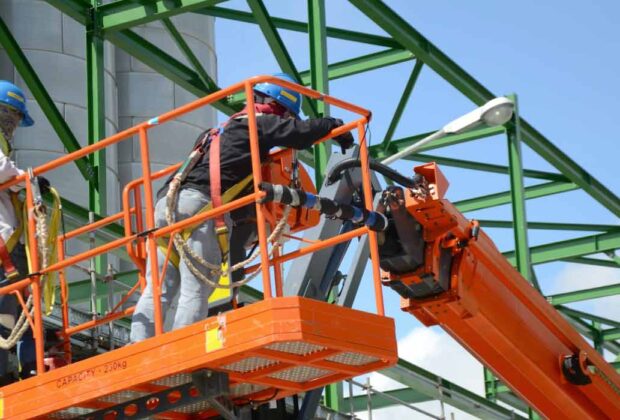Written by Terry Becker, P.Eng., CESCP, IEEE Senior Member
All electrical incidents are preventable! Keep employees safe with an up to date Electrical Safety Program and appropriate compliant electrical safety training.
New Arc Flash Risk Assessment Process
CSA Z462-2018 published January 8, 2018! Please purchase a copy for your reference and use at http://shop.csa.ca/en/canada/c221-canadian-electrical-code/z462-18/invt/27029372018!
One of the most significant changes in CSA Z462 2018 is the Arc Flash Risk Assessment requirement for energized electrical work task execution and as a component of the work task’s overall Risk Assessment Procedure. In the 2015 Edition, the Arc Flash Risk Assessment process was not a “complete” risk assessment process. As provided in the 2018 Edition the following general requirement and specific Arc Flash Risk Assessment requirements are provided:
1. Appropriate safety-related work practices shall be determined before any person is exposed to the electrical hazards involved in executing an energized electrical work task by using both shock risk assessment and arc flash risk assessment.
2. Only Qualified Electrical Workers shall work on electrical conductors or circuit parts that have not been put into an electrically safe work condition.
3. An Arc Flash Risk Assessment performed on a specific energized electrical work task includes the following requirements.
- General.
- Estimate of Likelihood and Severity.
- Additional Protective Measures.
- Documentation (the Arc Flash Risk Assessment for an energized electrical work task shall be documented).
- Arc Flash Boundary.
- Arc Flash PPE.
- Equipment Labelling.
There is more to it that you may have been trained on in the past for the 2015 Edition. The requirements are not complex in nature to know and perform, but without a documented Electrical Safety Program and compliant electrical safety training you will have difficulty getting the Qualified Electrical Worker (QEW) to apply the electrical safety training they received. You need management system documentation and a field-based hazard identification and application of risk control methods document for a QEW to use in the field to document that the QEW has achieved an acceptable residual risk level.
Let’s review the specific requirements for completing a documented Arc Flash Risk Assessment process in more detail, some more specific information on Items 3a. through 3g. above.
General
This is where key changes were made. For a justified energized electrical work task, it shall be identified that an arc flash hazard exists. Before executing the energized electrical work task an estimate of the likelihood of occurrence of injury or damage to health and the potential severity of injury or damage to health shall be completed. The QEW must then determine if additional protective measures are required, including the use of PPE.
Estimate Of Likelihood And Severity
When completing an Arc Flash Risk Assessment for a specific energized electrical work task it is a mandatory requirement with respect to the likelihood of occurrence and the potential severity of injury or damage to health that the following items are considering when evaluating the work task’s risk level.
- The design of the electrical equipment, including its overcurrent protective device and its operating time; and
- The electrical equipment operating condition and condition of maintenance.
Additional Protective Measures
Based on the inherent risk level for the energized electrical work task not been acceptable, additional protective measures will be required. Additional protective measures shall be selected and implemented in accordance with the Hierarchy of Risk Control Methods. When additional protective measures include the use of PPE the QEW shall determine them and apply them to the energized electrical work task to reduce risk: appropriate safety-related work practices will be used, the Arc Flash Boundary and the PPE that the QEW will be required to wear when exposed to the arc flash hazard.
A key change that was not required previously was the assessment of the likelihood of occurrence of an arcing fault and arc flash occurring. A new Table has been provided, Table 2 that used to be Table 4A. But the context and use of the new Table 2 is a significant change.
Documentation
The Arc Flash Risk Assessment shall be documented. Your company needs to provide a method of documenting a specific work task’s Arc Flash Risk Assessment as part of the company’s Electrical Safety Program. This field-based document would be used so the QEW can identify that they are exposed to arc flash and/or shock, and document the Hierarchy of Risk Control Methods applied to the work task so that an acceptable residual risk level is achieved.
Arc Flash Boundary
When an arcing fault and arc flash are probable the distance at which incident energy is 1.2 cal/cm2 is the Arc Flash Boundary.When you stand outside of the Arc Flash Boundary, no arc flash PPE is required to be worn. This distance can be calculated using formulas identified in CSA Z462 Annex D. If calculations have not been performed then application of the arc flash PPE category method can be used to determine the Arc Flash Boundary.
Arc Flash PPE
Two methods can be used to determine arc flash PPE, incident energy analysis method or the arc flash PPE category method. Either, but not both, methods may be used on the same piece of equipment. When the incident energy analysis method is used arc flash PPE SHALL NOT be identified with an arc flash PPE category #, but SHALL be determined with an Arc Thermal Performance Value (ATPV) for the arc flash PPE been equal to or greater than the calculated incident energy. CSA Z462 2018 provides new Table 3 for reference when incident energy analysis is completed and identifies two chooses for arc flash PPE, task wear ATPV 1.2-12 cal/cm2 or an arc flash suit with ATPV >12 cal/cm2. It is noted that arc flash suits are available up to a 140 cal/cm2 ATPV.
Equipment Labelling
Electrical equipment that will have energized electrical work performed on it shall be labelled with an Arc Flash & Shock Warning Equipment Label (based on ANSI Z535). Specific information shall be included on the Equipment Label (see Figure1). The incident energy analysis shall be reviewed for accuracy at intervals not to exceed 5 years. In the CSA Z462 2018 Edition in supervised industrial installations, the arc flash data can be documented in a manner that is readily available to persons likely to perform an examination, servicing, maintenance or operation of the equipment while energized. The arc flash data could be provided in a Results Table format directly from the P.Eng. incident energy analysis report (see Figure 2).
Summary
As a component of the overall work task’s Risk Assessment Procedure an Arc Flash Risk Assessment shall be completed. The Arc Flash Risk Assessment requirements in the CSA Z462 2018 Edition are significantly different than the 2015 Edition. Please make sure your company documents the specific requirements in your company’s Electrical Safety Program. A Qualified Electrical Worker (QEW) also needs to document their specific work task’s Arc Flash Risk Assessment before executing the work task.

Figure 1. Alternate Equipment Label – Arc Flash Data Provided In Results Table=
Please submit any questions or comments you may have to Kevin Buhr and myself at kevinb@electricalline.com and tbecker@danatec.com.
Terry Becker, P.Eng., CESCP, IEEE Senior Member is the first past Vice-Chair of the CSA Z462 Workplace electrical safety Standard and currently a Voting Member and Working Group 8 Leader, Annexes. Terry is also a Voting Member of the IEEE 1584 Technical Committee and an Associate Member of the CSA Z463 Guideline on maintenance of electrical systems. Terry is a Professional Engineer in the Provinces of BC, AB, SK and ON. Terry is Senior Vice President, Electrical Safety, Danatec Educational Services Ltd., providing electrical safety consulting, licensed products and training solutions. www.danatec.com.

Figure 2. Incident Energy Analysis Results Table Example



Comments are closed.